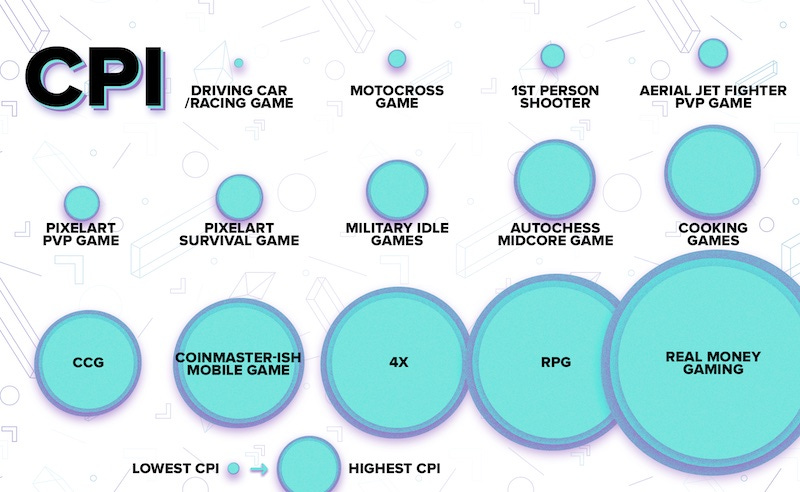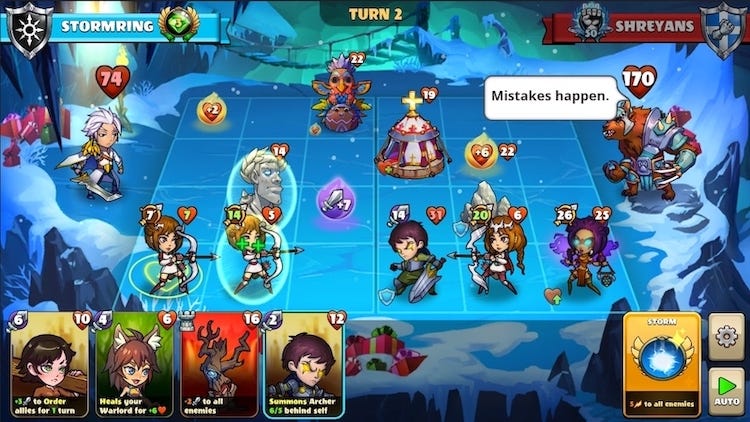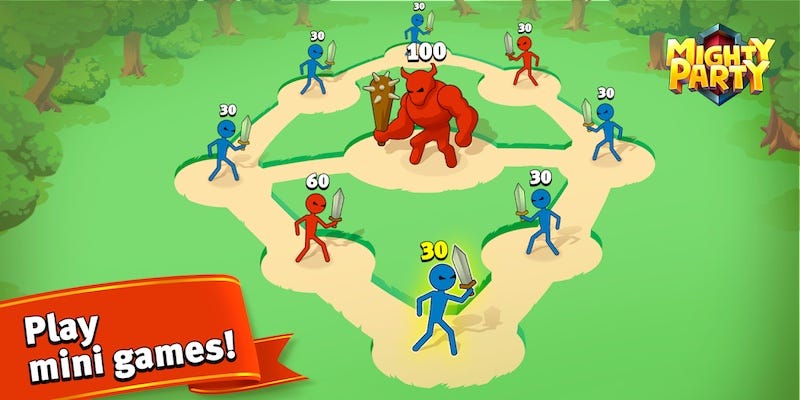Game trailers: breaking down a key discovery mistake
Derek Lieu helps us deconstruct things you don't want to do on Steam.
[The GameDiscoverCo game discovery newsletter is written by ‘how people find your game’ expert & company founder Simon Carless, and is a regular look at how people discover and buy video games in the 2020s.]
Welcome back to another week aboard the mule train to the Sierra Nevada gold mines that is ‘success in PC/console game discovery’. Will one of your steeds get bitten by a rattlesnake? Will some flash floods wash away your backpacks? Isn’t it fun?
Talking of filthy lucre, us camp suppliers here at GameDiscoverCo have a new deal - 25% off a GameDiscoverCo Plus paid subscription. BTW, we get asked about use cases for Plus, and ‘see how your unreleased Steam game ranks daily in ‘Hype’ vs. all others in your tags’ is a big one. (But there’s lots more - see our ‘About’ page for full perks.)
Game trailers: don’t bore us, get to the chorus?
We’re starting out this week with a major game discovery element that, frankly, we don’t talk about enough - game trailers. And more specifically, the videos that you pick to appear and autoplay on key game platforms like Steam and console.
There’s a tricky element to the pacing of game trailers, as follows: a lot of devs and publishers showcase games in a traditional movie-style 'slow burn reveal!' trailer format, which doesn’t show your gameplay clearly in the first few seconds.
This might work OK at the PC Gaming Show or a Keighley-verse showcase, where watchers are committed to sitting through the whole thing. But if you want players to eval and wishlist your game on Steam, they need to see gameplay or target gameplay footage way quicker. Having it appear 15-30 seconds in? They’re not going to wait.
Luckily, I had an expert I could ask about this - Derek Lieu, the dedicated game trailer creator for Psychonauts 2, Half-Life: Alyx, Among Us & more, who also writes extensively on the subject and has a video course on it. And turns out - he agrees!
Derek explains: “A lot of my trailers now are structured like this one I made for Noita or [the above for] Tactical Breach Wizards which has a few seconds of gameplay up front (so it's already started playing before people have a chance to start clicking through the progress bar).”
So, in addition to this ‘making of’ video - which goes through the entire process of making the latest Tactical Breach Wizards trailer - Derek made the following points:
He re-affirms that people should have their lead Steam/console page trailer show gameplay ASAP, “especially because of Chris Zukowski's research which showed a lot of people tend to just click through the trailer's progress bar in search of ‘raw gameplay’, rather than watch it from the beginning.”
If you’re being 1000% practical, “story and cinematic stuff is the ‘nice to have’ stuff that supports the core gameplay loop. Story acts as support to the gameplay” for most games. So Derek recommends “the first trailer be gameplay gameplay gameplay, and MAYBE have a second trailer” which goes deeper.
As for whether you should recut a trailer just for Steam: “Whether or not you make multiple trailers might be limited by budget, so if you can make a trailer which is both good for a wider PR beat AND the Steam page, then that sounds ideal to me.”
You could even change it up entirely, for example: “Derek Yu put this developer commentary trailer I made first in line for Spelunky 2. Muted, it looks like raw gameplay - but with audio you hear him talking about the game.” An interesting approach! (Alternately: if you livestream onto your Steam page, that creates easily viewable gameplay footage, of course.)
Finishing up, Derek Lieu jokes of the ‘too many trailers’ brigade: “If you want a good example of what NOT to do, then look at the Steam page of a lot of AAA games who put up sooooo many trailers (of course, they're operating on a totally different level than indies, so they can get away with it).” Sure, but ‘just keep making new trailers and never removing the old ones’ isn’t that tactically sound, no matter how big you are…
Finally, Derek has a fairly recent blog post about making an ‘MVP’ trailer, for devs in a rush to get a Steam page launched. He explains: “This style of trailer is made for people who click through the progress bar, and NOT intended for a Twitter post or YouTube announcement.” But it’s still a good take on the minimum you need to get there…
Those ‘fake’ mobile ads: behind the economics…
No sooner had I praised mobile F2P UA expert Matej Lancaric as a ‘James Dean-esque young rebel’, content wise, than he came back with this particularly good post on the mechanics of how mobile devs create ‘fake ads’ to engineer profitable growth.
As you may know, mobile discovery is a whole other can of worms compared to the PC/console space we tend to cover, largely based around paid user acquisition for games that most aggressively monetize LTV (lifetime value) per player.
But to be honest, PC & console games are dealing with a subset of these issues, so it’s really good to be aware of what’s going on. And in this case, it’s all about the CPI (cost per install) for games. Matej made his own ‘rough’ chart of CPI per genre above.
He explains: “I ran a RPG game some time ago with $150 CPI in US with Purchase campaigns on Facebook. Value optimised campaigns showed $300+ CPI. This game was killed after global launch – could have been done earlier! What can you do in this type of situations - kill a game, right? Or, you might try to run FAKE ADS to save it!”
And just to explain - when he’s saying ‘fake ads’, he means that these devs are creating super attractive, hyper-casual style ‘mini-games’, using those images solely for their ads, and even sometimes implementing the ad as part of the tutorial (!) But the actual gameplay is completely different.
That way, you can get super-low CPI (like the game is hypercasual), but then monetize like the hardcore strategy RPG game you really are. A wolf in sheep’s clothing, right? Matej’s key example? Mighty Party, which actually looks a bit like this:
But if you go look at all of the example screenshots on the Google Play page right now, they’re solely showing screenshots like the below one. Which is to say, a completely different looking, far more casual title:
So yes, this is a similar tactic to Hero Wars, if you’ve seen their relentless ad spend recently, but even less subtle. (At least Hero Wars tries to vary its App Store screenshots to hint at what the game really looks & plays like. Sorta. Kinda.)
Anyhow, this seems to be a formula for some large mobile devs. At least one of the games mentioned in here - X-Hero - is making $3 million per month with a combination of ‘save the dog’ hypercasual grafted onto a hardcore fantasy RPG. (?!)
As for what’s to be done about this? Honesty-wise, if you look at YouTube videos showing Mighty Play in action, you can certainly ‘play mini games’, like in the screenshot and ad creative. It’s just a fig leaf to onboard users to the real game inexpensively, though. So.. it’s kinda yucky, right? But profitable yucky.
[And this is why we don’t cover mobile discovery. God speed to those like Matej who do, though - go read his article for more. It’d be nice to see platforms do something about this.]
The game discovery news round-up..
As we pull into a pitstop with our mules in tow, it’s time to assemble the ol’ campfire and round up a whole host of interesting game discovery and platform news. Let’s stoke the flames and start heating the beans:
The Xbox dashboard’s revised home screen is live for Insiders in beta, leading to YouTube videos showcasing it. Kotaku adds an ‘explainer’ for it: “But maybe the biggest change to the dashboard in this potential future overhaul is just how prominently Xbox Game Pass is featured…. the company’s subscription service basically dominates the home screen now.” Quelle surprise.
Continuing the ‘Polish public game companies give us good stats’ situ, 3R Games has specifics on Thief Simulator: Greenview Street VR’s Quest 2 numbers. From July 7th launch to August 31st, the game - one of the top ‘new’ sellers on Quest, btw, sold 56,000 units, with 6,200 refunds, and a gross of just over $1 milion. (‘Store ratings to units sold’ multiple was around 75x, btw.)
A super wide-ranging new SuperJoost newsletter on how platforms run the show has one major takeaway (above graph): “Hardware used to represent 47 percent of total earnings but has declined to 36% in 2021. And third-party publishing increased from 31% to 43% over the decade. Platform holders have switched roles, and increasingly operate as an intermediary between game developers and players.”
The October 21st appeal hearing re: Epic & Apple is looking juicier and juicier: “The [U.S. Department Of Justice] and the [state of California] will indeed speak. The DOJ gets 10 minutes; California gets 5; and Apple gets an extra 10 minutes for the sake of balance.” The DOJ is “concerned that the district court erred by reading Section 1 of the Sherman Act narrowly and wrongly by carving out particular types of “contract[s]” from its reach.” (In other words, they think Apple got off too easy.)
Microlinks: Looks like Bytedance’s standalone Pico 4 VR device may be announced on Thursday; Blankos Block Party is the first NFT-toting game to come to Epic Games Store; roguelike deckbuilder Nowhere Prophet reveals its PC/console game revenue per platform (not including Game Pass).
The latest Sony awkwardness: “When Sony Interactive Entertainment’s PlayStation VR2 headset is released in 2023, it won’t be able to play games from the original PlayStation VR.” Sony’s Hideaki Nishino says: “PSVR games are not compatible with PSVR2 because PSVR2 is designed to deliver a truly next-generation VR experience.” Maybe a symbolic issue, but for the megafans, not great.
More excitement for user-generated content? EA’s CEO Andrew Wilson told a Goldman Sachs conference last week: “On a 5-10 year time horizon, what we expect to see, and we’ve started to see this today, is that there will be creation of new worlds that will fit right next to the worlds that we create. And people will move frictionlessly between those two things.” He right.
A small amount of bonus Microsoft x Activision drama? The second stage of the UK CMA anti-competition investigation is going ahead, and Microsoft and Sony traded ornery public statements, with Sony saying again that Microsoft owning Call Of Duty would have “major negative implications for gamers and the future of the gaming industry.”
The SteamDB ‘charts’ page - like this one for Hypnospace Outlaw - now have four possible owner/buyer estimates: SteamSpy, VGInsights, PlayTracker and ‘reviews multiplier’. We think VGInsights is the most accurate of these for now - it’s ‘reviews multiplier with anchors’. (And SteamSpy has gone a bit funny in its old age.) But you can look at them all, and decide yourself.
Microlinks, Pt.2: top Roblox game Adopt Me shuts down in The Netherlands and Belgium over loot box woes; Twitter has bold plans to become the center of the gaming community - but first, it has lessons to learn; an interesting podcast & transcript with Mark Bergen, the author of a new book about YouTube called Like, Comment, Subscribe.
Finally, Limited Run’s Carbon Engine lead MVG created some helpful artwork to explain how platform cert goes on console vs. PC nowadays. He’s not wrong, folks:
[We’re GameDiscoverCo, an agency based around one simple issue: how do players find, buy and enjoy your premium PC or console game? We run the newsletter you’re reading, and provide consulting services for publishers, funds, and other smart game industry folks.]






